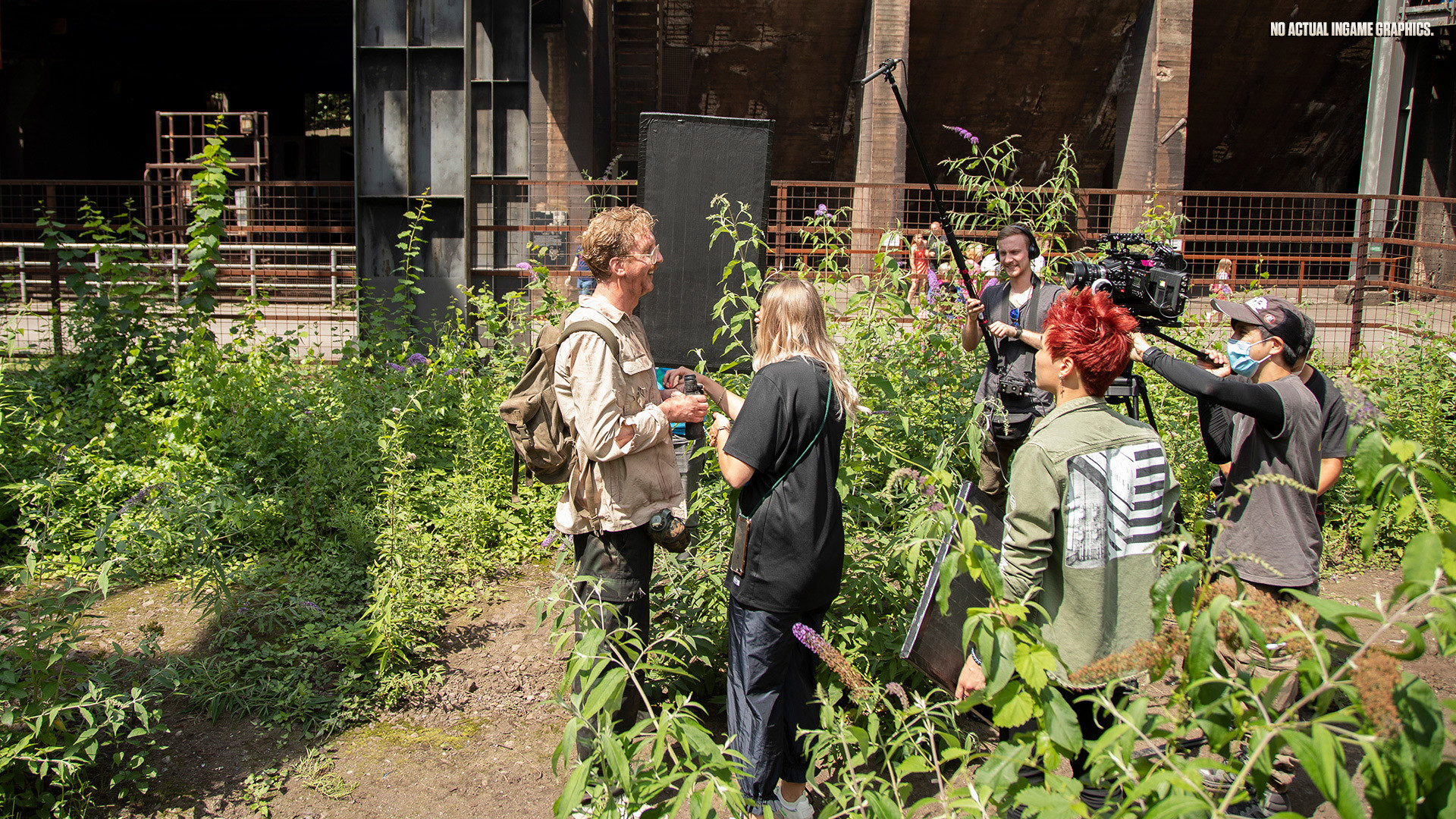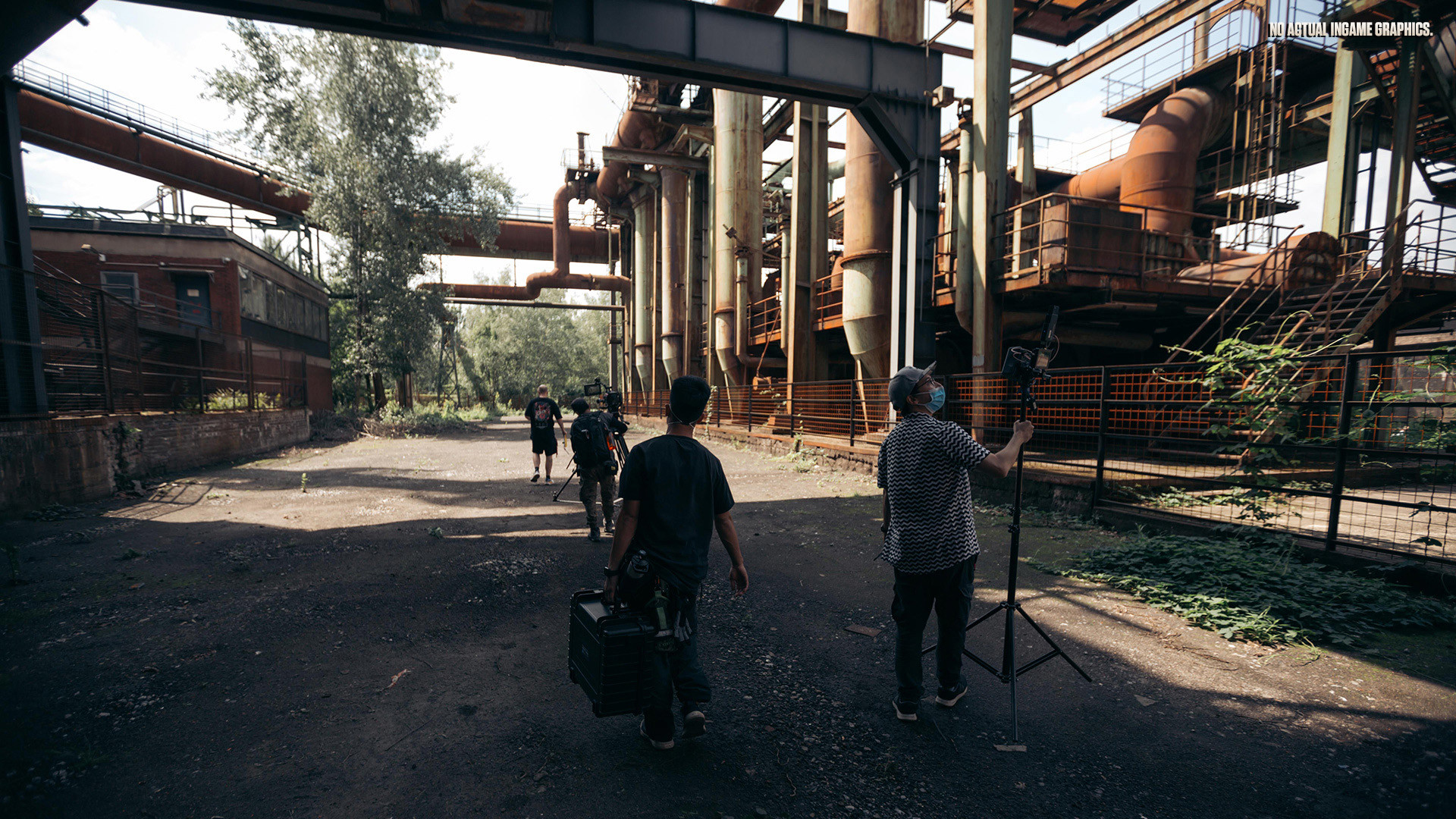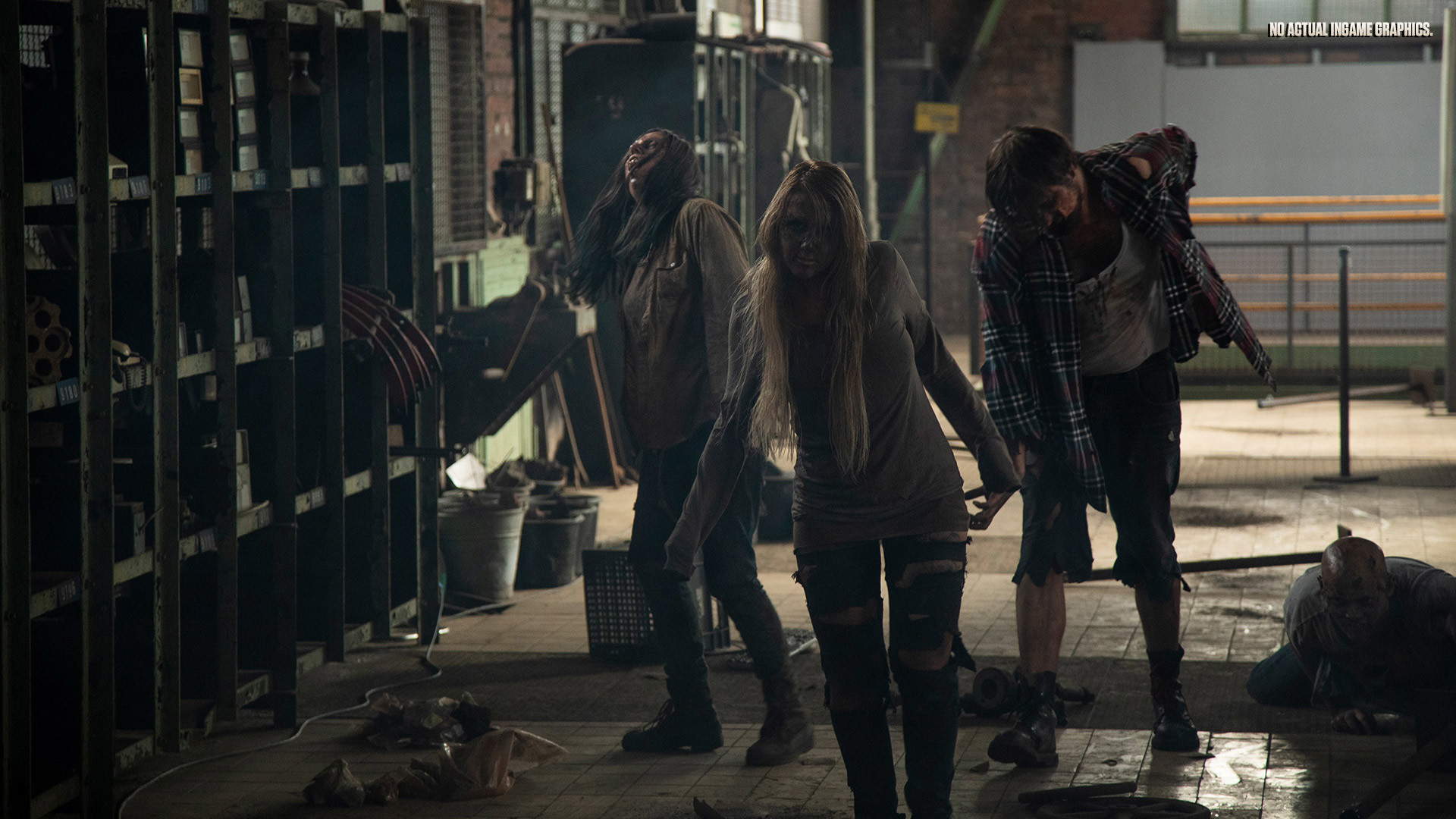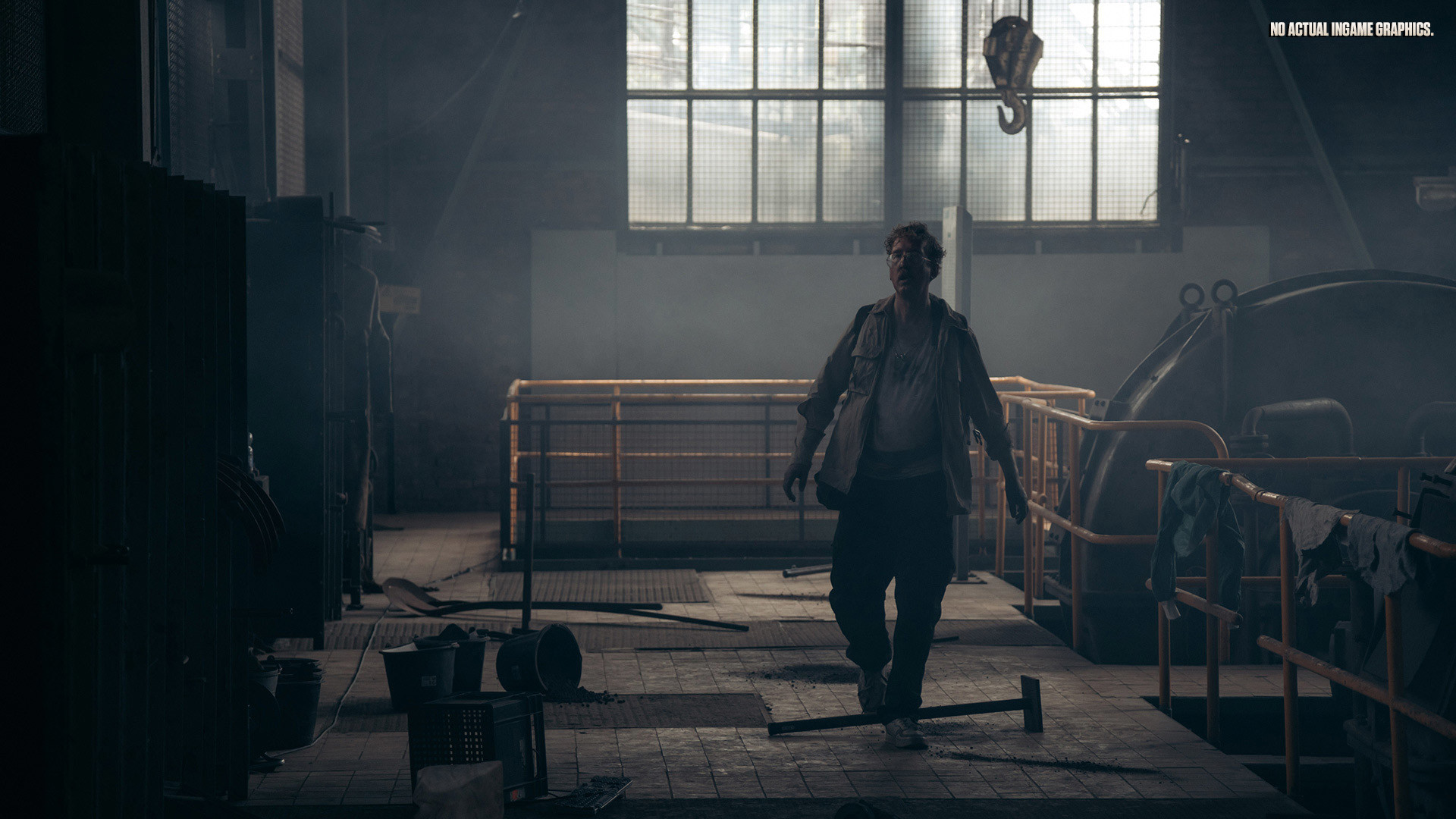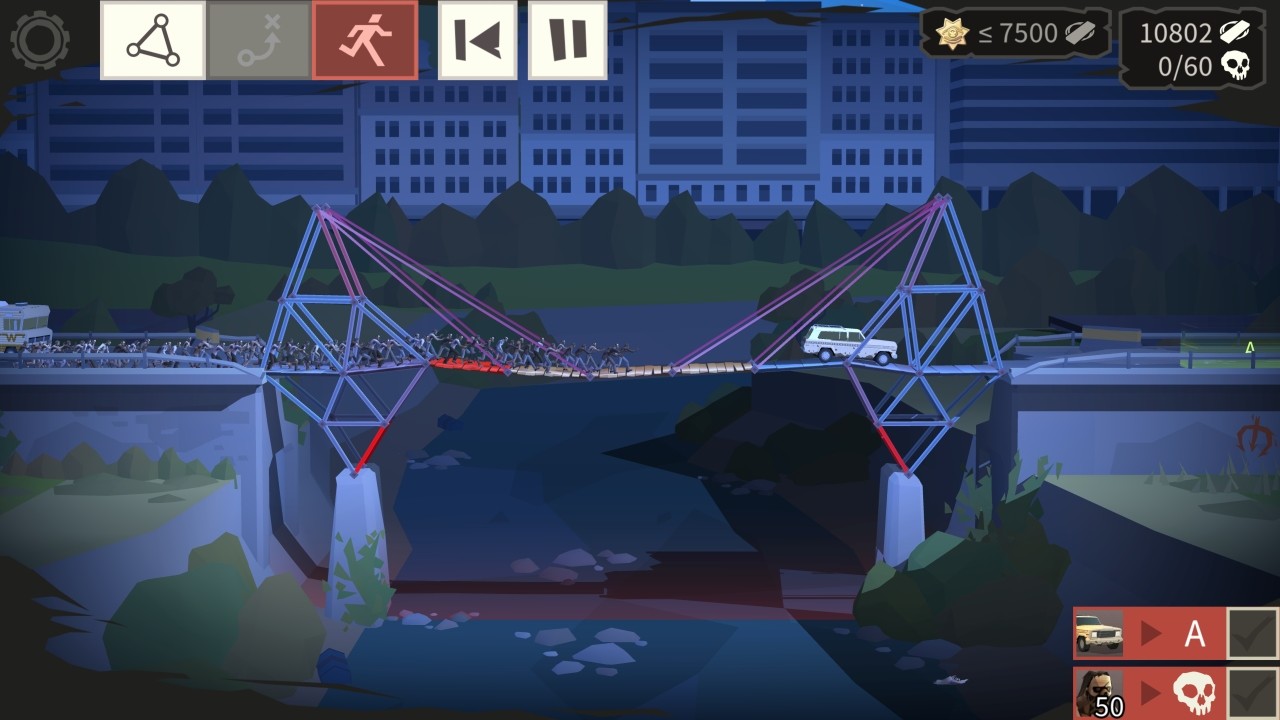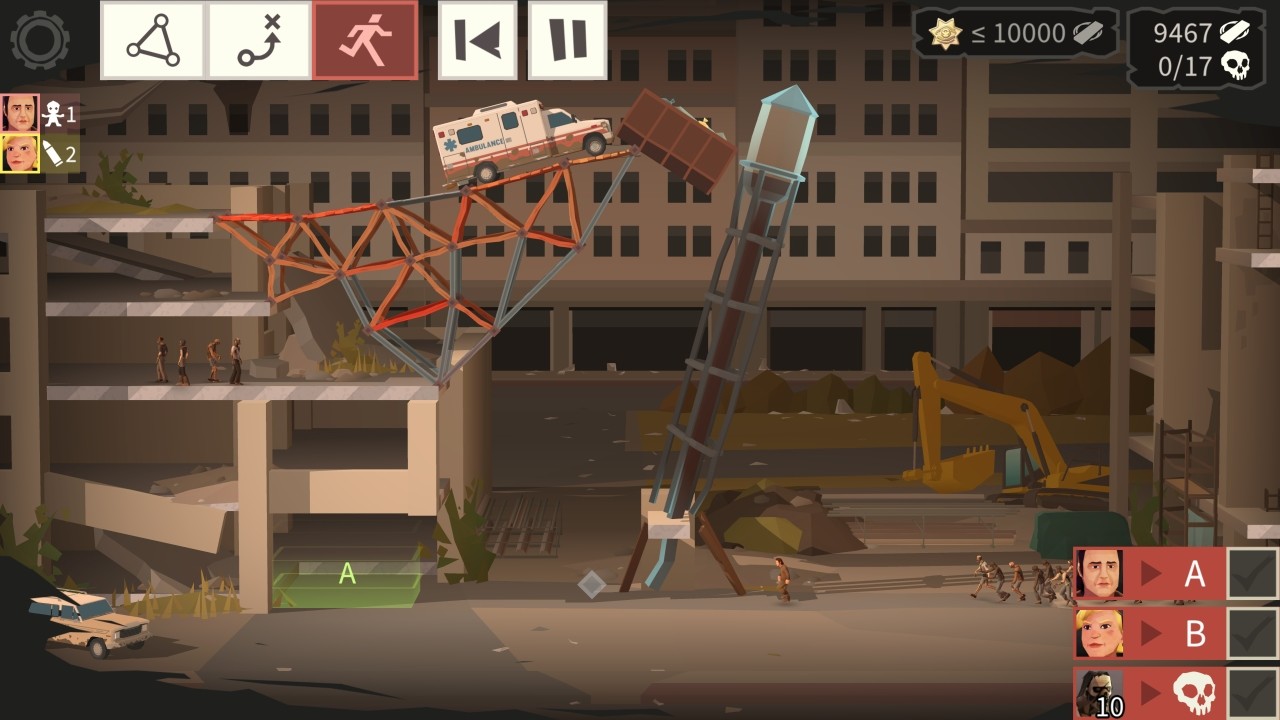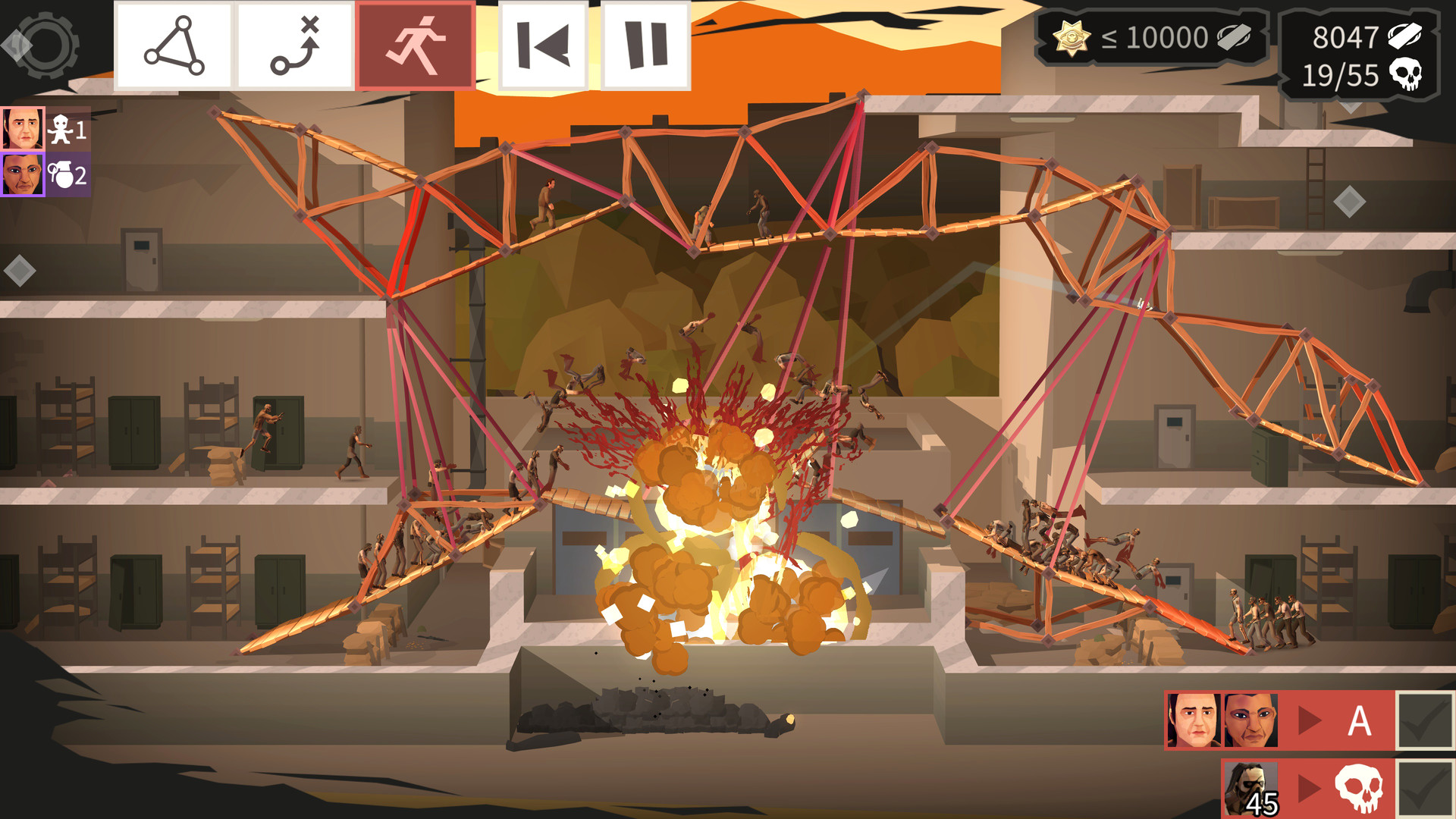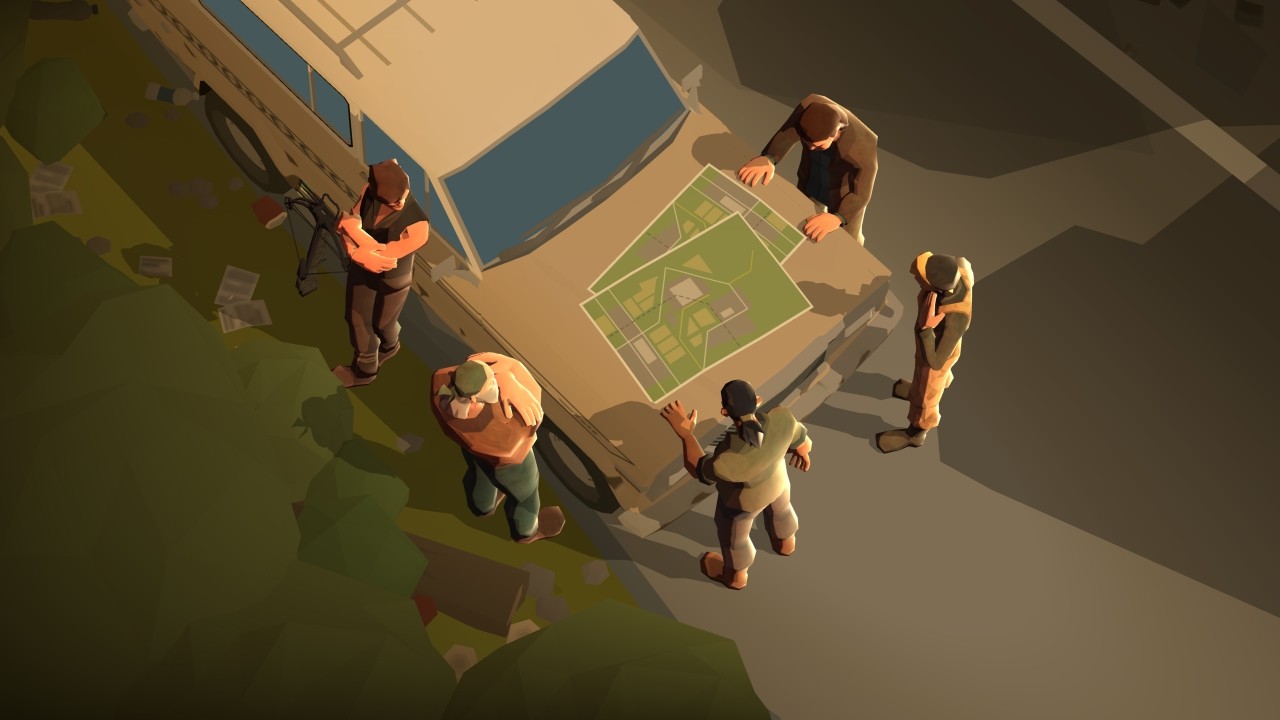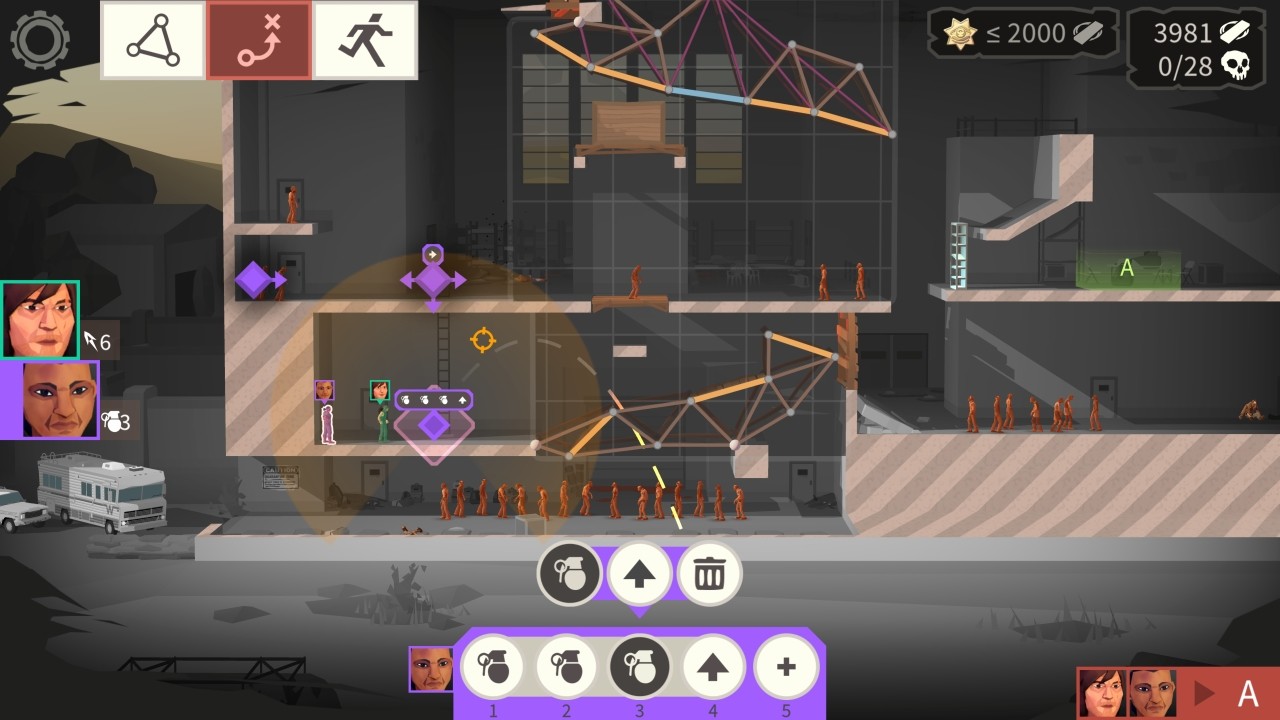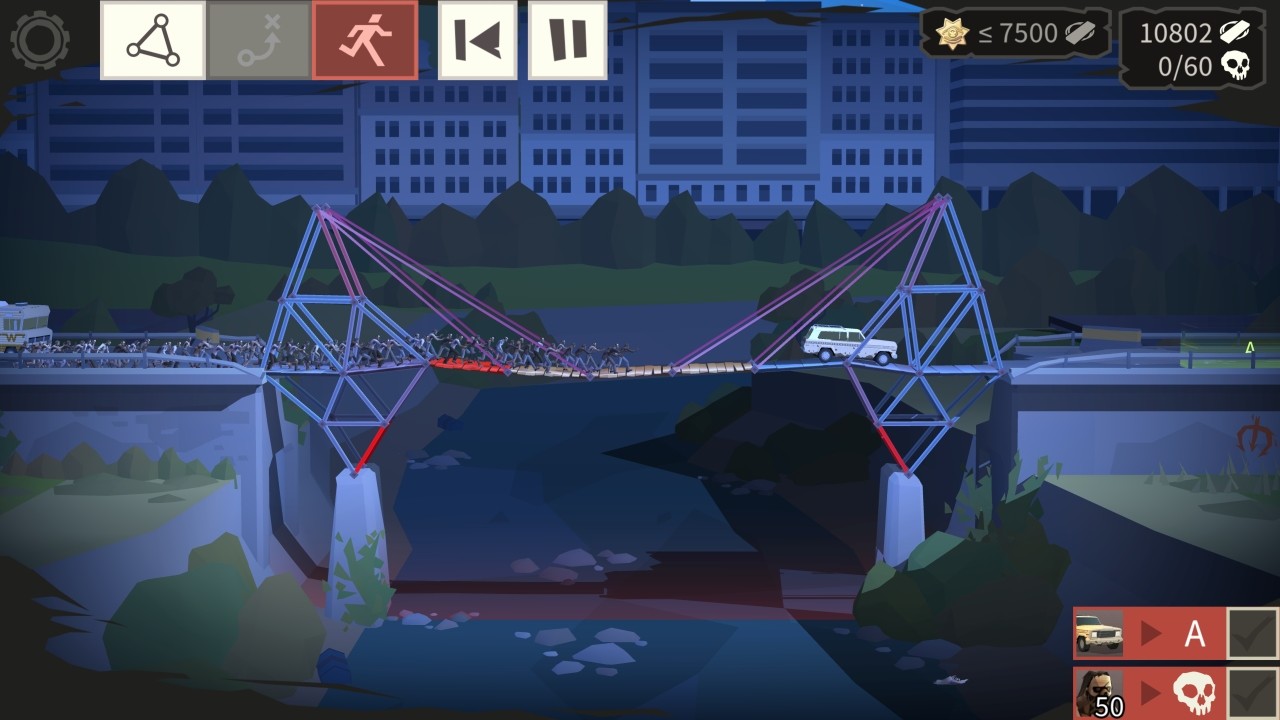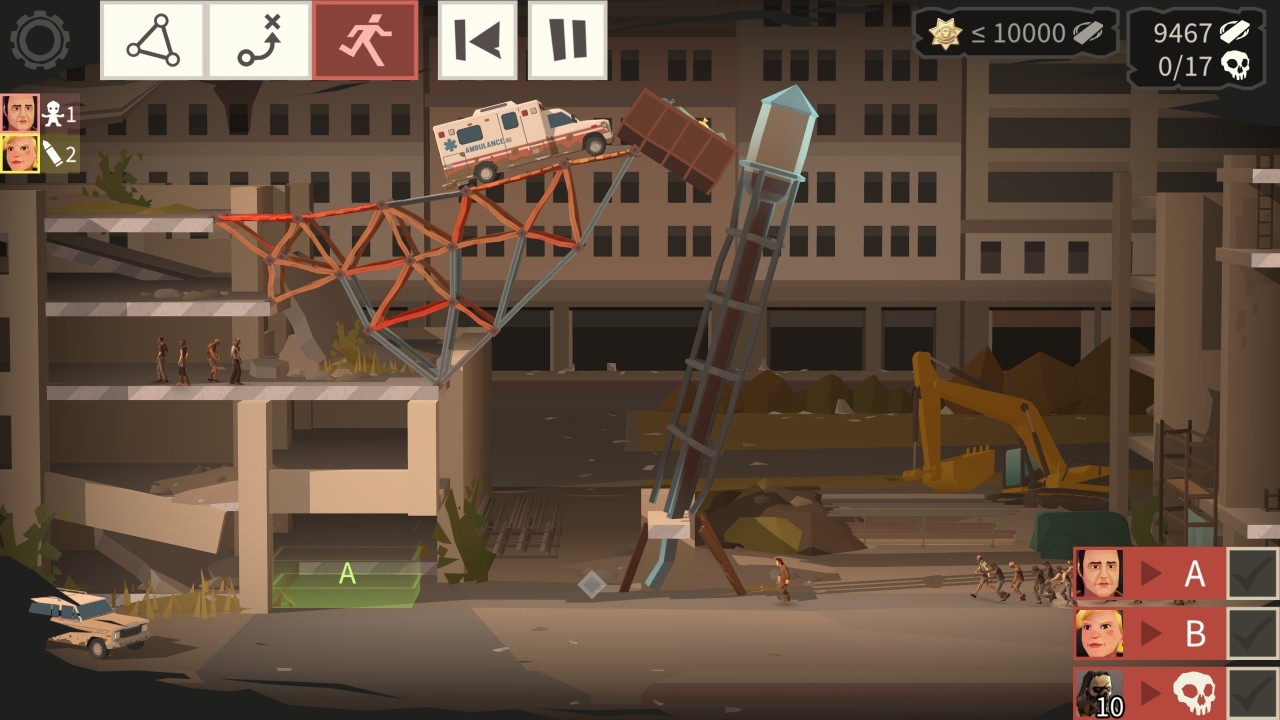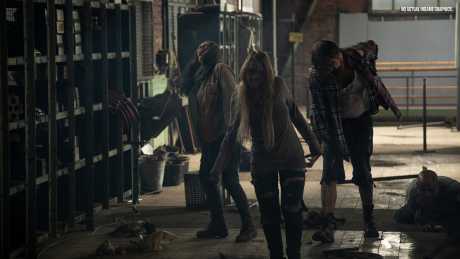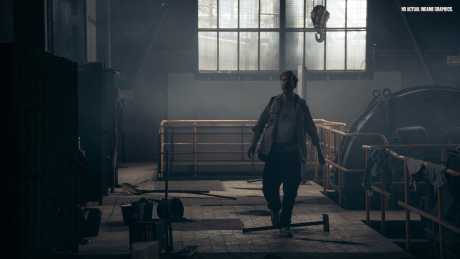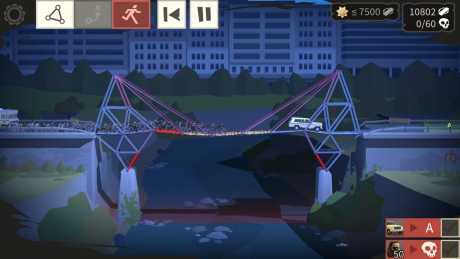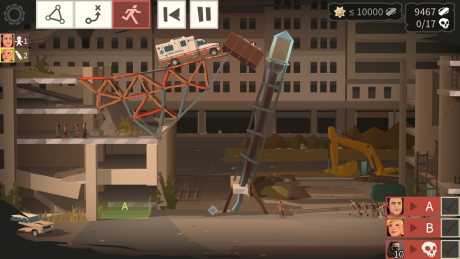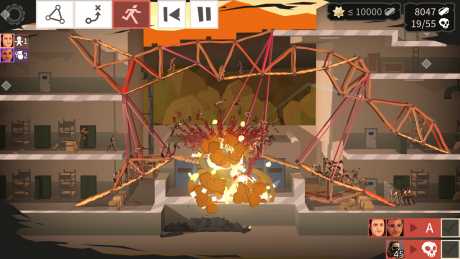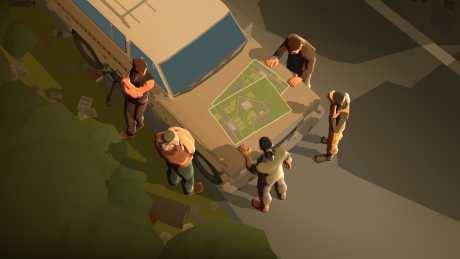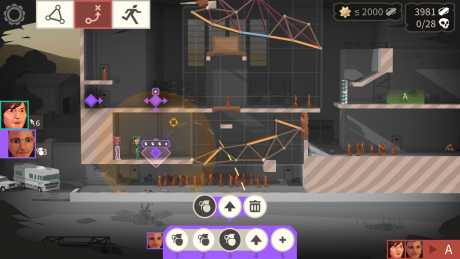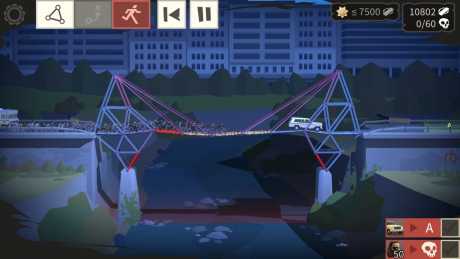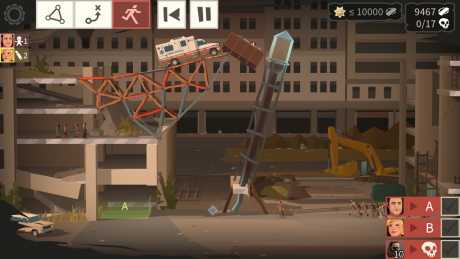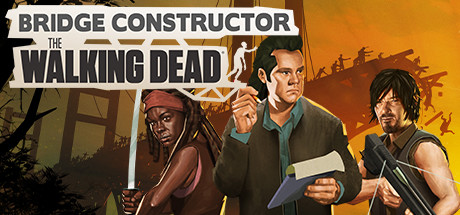Bridge Constructor: The Walking Dead shows there is still life in the zombie apocalypse trope.
I’ve long been a fan of using fictional post-apocalyptic settings as a way to explore deeper themes surrounding humanity, so even though we’re currently in the midst of a pandemic (a common cause leading to fictional post-apocalyptic universes), The Walking Dead universe setting of this game was guaranteed to immediately pique my interest. My interest was even more piqued when I realized it was a puzzle-solving game, because I thoroughly enjoy the mental stimulation that comes from wrestling with puzzles. This interest was paid off with a delightful experience provided by Bridge Constructor: The Walking Dead, which I highly recommend to anyone who enjoys physics-based simulation-puzzle games, regardless of the setting.
Game Universe
The Walking Dead universe provides a perfect framework for the challenges presented by the gameplay, although the story is not the game’s primary focus. Fans of AMC’s The Walking Dead will be pleased to see many familiar faces from the TV show, such as Eugene and Daryl. However, the game’s story doesn’t seem quite the same as the show’s, although I confess I’m not fully up-to-date with the television series. The dialogue is exquisitely humorous despite the slightly dark tone necessitated by the post-apocalyptic setting.
https://steamcommunity.com/sharedfiles/filedetails/?id=2297719679
Gameplay and Mechanics
The game consists of 5 chapters with 8 missions each, and there are three modes used in solving puzzles: Simulation Mode, Build Mode, and Commands Mode. Players can easily toggle between the modes at any time. Simulation Mode is basically to check whether a proposed solution works.
In the Build Mode, players design constructions using the provided materials. The first material provided is wood, with other materials like cable and steel being introduced later. The material type affects the weight, cost, friction for rolling objects, how much of an impact or load it can take, and more, so the same construction in wood might not produce the same result in steel. The provided grid lines in the outlined build area are very useful for making slight adjustments to angles and lengths when iterating.
Not all missions use the Commands Mode, but this mode is where the player can plan a logical sequence of orders for a character to perform at waypoints to get from their starting point to the safe zone. In addition to telling characters which direction to go and activating nearby objects, some characters have special skills. These special skills often make sense with the television background of the character. For example, Daryl shoots arrows with his crossbow. A limited number of uses for each skill is available to the player depending on the mission. While timing actions, it’s important to keep in mind the walkers in relation to your heroes. Heroes can only kill walkers when approaching head on, and they can’t fight when they’re climbing, stumbling, lying on the ground, etc. If too many walkers are still alive when a hero approaches, the hero will be overwhelmed and killed.
Some puzzles are real brain-benders in terms of orchestrating the timing between flexible/dynamic constructions, moving objects, and character commands. I also found it entertaining that some solutions were still considered successful. For example, getting a vehicle to the checkpoint, but it’s upside down and on fire. In reality that car would be totally useless, but the game still counts it as a success as long as it’s in the right location at the end.
https://steamcommunity.com/sharedfiles/filedetails/?id=2297720443
The game is designed to offer multiple levels of challenge to the player depending on how they want to play. At the base level, there is simply achieving the mission objective, regardless of how many resources are used. In order to challenge yourself further, there is also staying within resource constraints while achieving the mission objective or setting up a solution to kill as many walkers as possible along the way.
STEM Themes
For those unfamiliar with the STEM acronym, it stands for Science, Technology, Engineering, and Math, and this game explores those themes in a fun way. In order to solve the puzzles, players must use physics, engineering, and geometry. Certain geometric shapes are more stable than others, and some of the special abilities require you to estimate landing sites using a parabolic trajectory. Computational thinking and logic is necessary to plan the order for commands. The game design makes it fun to learn these concepts through experimentation and failure. Just as in the real-world, creativity is a must. Personally, however, I wouldn’t have minded more background education on some of the terms they used to inform me in making my strategic decisions. For example, they use the words tensile, compressive, strain, and stress, but the game never really explains what they mean. Even though players can Google those, it would be more fun to have them explained in the game universe.
Art Style and Graphics
The art style is more simple rather than realistic, but also doesn’t seem to hearken to the comic book origins of The Walking Dead universe. Colors are used skillfully to indicate key information. For example, yellow dots are anchor points and are more stable than just the blue dots. A reddish glow indicates a fragile, easily damaged area, and a silvery bluish shimmer indicates that an object is movable. When watching a solution play out, red indicates parts of your structure that are near to breaking, which can be very helpful in making improvements in successive iterations.
https://steamcommunity.com/sharedfiles/filedetails/?id=2297734143
Audio
The music on the loading screen is recognizable as a riff on the opening theme from the TV show, but the songs that play during the missions can actually be surprisingly beautiful. The soft Southern guitar and melodic piano sometimes belies the silly tone of the dialogue. There is only voice narration at the very beginning of the game; other than that the narration at the beginning of missions and the dialogue is only text. Maybe since I haven’t finished all of the chapters yet, the identity of the narrator at the beginning is unclear to me, although it feels like it’s not one of the characters we’ve encountered yet. Most of the sound effects perfectly complement the action that is going on (rolling objects, explosions, etc.). I find the squishing sounds that occur when walkers are killed particularly satisfying.
Achievements
There are 13 achievements total. Some are unmissable as you progress through the chapters, while others involve challenging yourself to manage resources efficiently or kill a certain number of walkers.
Verdict
Bridge Constructor: The Walking Dead is an excellent physics-based simulation-puzzle game well-worth buying at full price ($9.99 at the time of review). I find its use of STEM concepts in its approach to problem-solving delightful. Although I haven’t finished all of the chapters yet, I fully intend to, and I’ve added other Bridge Constructor games to my wishlist to check out in the future.
Zitat:
Visit SaveOrQuit.com for detailed game reviews, posted daily!
